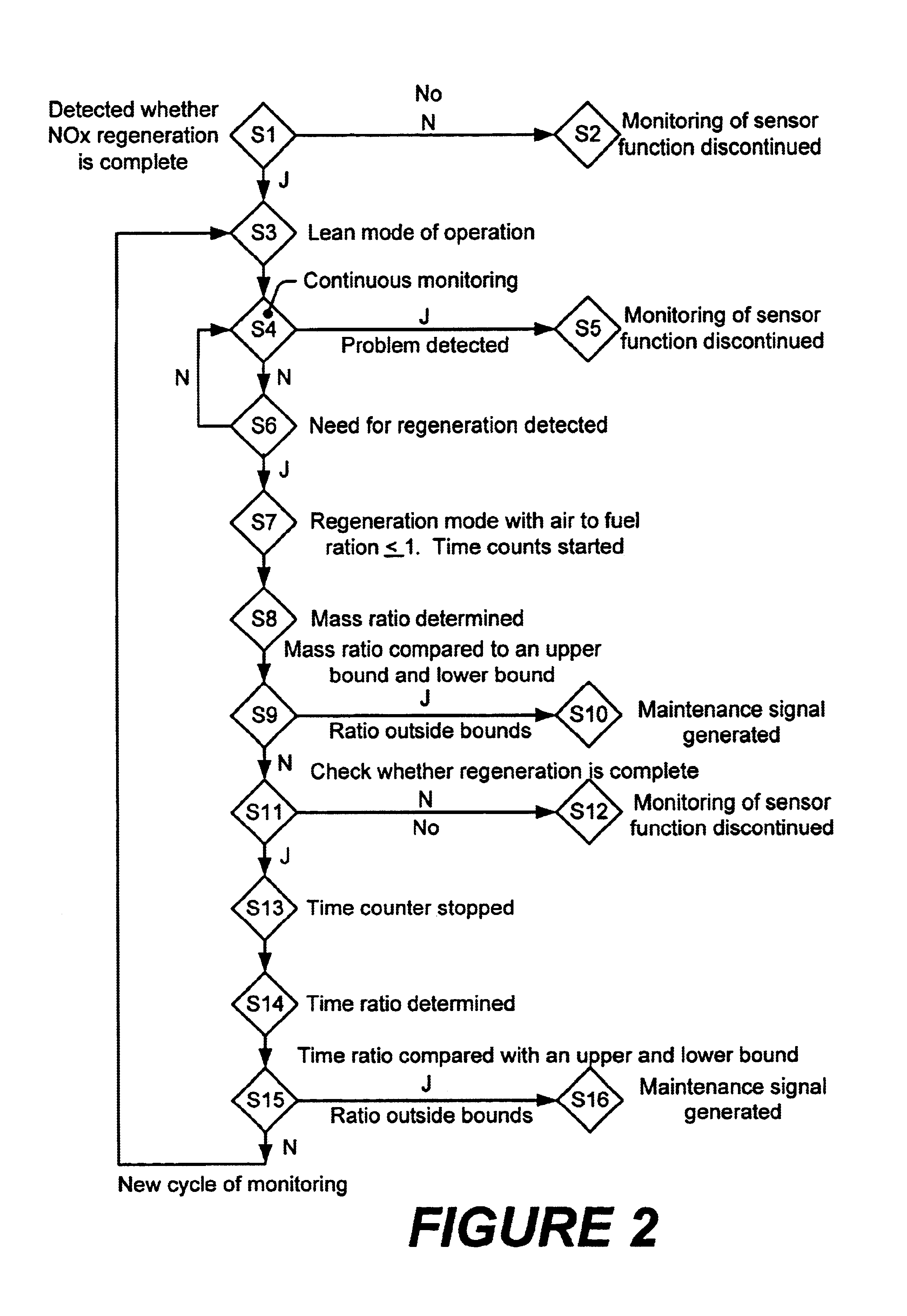Method for monitoring the functioning of a NOx sensor arranged in an exhaust gas channel of an internal combustion engine
- Summary
- Abstract
- Description
- Claims
- Application Information
AI Technical Summary
Benefits of technology
Problems solved by technology
Method used
Image
Examples
Embodiment Construction
FIGS. 1 and 2 are drawings showing embodiments of the invention. FIG. 1 shows an arrangement of an internal combustion engine 10, including an exhaust duct 12, a precatalyst 14, and a NOx storage catalyst 16. The precatalyst 14, and the NOx storage catalyst 16, serve to diminish pollutant emission of the engine 10. Ordinarily, the catalysts 14 and 16 include components that make possible the oxidation of reducing agents formed during combustion, such as CO, HC or H2, by atmospheric oxygen. At least the NOx storage catalyst 16, comprises a catalyst component that makes possible the reduction of NOx, formed during the process of combustion of an air-fuel mixture, by means of the reducing agents. If the engine 10, is in a lean mode of operation, as a rule, the proportion of reducing agents in the exhaust will not be sufficient to ensure a high conversion of NOx. In lean mode, therefore, the NOx will be absorbed as nitrate by the storage component of the NOx storage catalyst 16.
The abso...
PUM
 Login to View More
Login to View More Abstract
Description
Claims
Application Information
 Login to View More
Login to View More - R&D
- Intellectual Property
- Life Sciences
- Materials
- Tech Scout
- Unparalleled Data Quality
- Higher Quality Content
- 60% Fewer Hallucinations
Browse by: Latest US Patents, China's latest patents, Technical Efficacy Thesaurus, Application Domain, Technology Topic, Popular Technical Reports.
© 2025 PatSnap. All rights reserved.Legal|Privacy policy|Modern Slavery Act Transparency Statement|Sitemap|About US| Contact US: help@patsnap.com



